I never got around to finishing up my Rio Grande Valley trip report, which is a crime because this last installment is packed with action. Imagine that after a delirious few days in the Rio Grande Valley, your trip was almost at an end. If you were me, this is how your final frenetic day would go down…
You’d probably begin hours before dawn on a bus bound for the Upper Rio Grande, speaking in hushed tones about the wild Muscovy Ducks that turn up in the Falcon Dam area. Daylight would break on a group of eager enthusiasts scoping a shallow river for subtropical specialties. On cue, kingfishers would fill the air, not just the blue-toned but never banal Belted that you’re used to but also hulking Ringed with rufous bellies and spry little Greens, clad in plumage the color of pine needles. This congregation of kingfishers, unmatched in the Americas north of Mexico, is surpassed only by a density of doves like Mourning, Inca, Eurasian Collared, White-winged, and Common Ground Doves, as well as the ubiquitous Rock Pigeon. White-tipped Dove is hardly routine along the Rio Grande but the more prestigious pigeon is definitely Red-billed, like the squadron that soared grandly down the river in front of us.
Chapeno also serves up wicked waterfowl like Black-bellied Whistling-Duck, Wood Duck, Gadwall, and a lone Mexican Mallard, though alas no muscovies at this particular moment. American White Pelican and White-faced Ibis make the scene along with vultures, ospreys, and kestrels. You’ll spot tons of Great-tailed Grackles and Red-winged Blackbirds along the river bank and if you scope them carefully, you may even pull out a Bronzed Cowbird or two.
You’ve got to watch the river carefully, because anything might fly by. We caught just a glimpse of a possible Clay-colored Robin, always a prize north of the border, and while we never found where the bird went to ground, we did uncover plenty of Eastern Phoebes, Vermilion Flycatchers, Great Kiskadees, Green Jays, Northern Cardinals, Northern Mockingbirds, Altamira Orioles, and Audubon’s Orioles.
Since Salineño beckons, the party must move on. Along this stretch of Rio Grande real estate, birders and the Border Patrol make each other nervous but the possibility of undocumented immigrants like Zone-tailed Hawk make this a pretty sweet stake-out spot. Even if that killer doesn’t come across, you’ll get glass on Gray, Sharp-shinned, Cooper’s, and Red-shouldered Hawk along with the usual raptors. Waterfowl flies fast and thick out here with Great Blue Heron, Great Egret, Snowy Egret, Cattle Egret, and an remarkable abundance of Spotted Sandpipers. You may be looking for Neotropic Cormorant but don’t jump to conclusions because Double-crested is more common.
The scrubby woods en route to the river are great for both Golden-fronted and Ladder-backed Woodpecker, as well as Black-crested Titmouse, House Wren, and, if you’re lucky, Black-tailed Gnatcatcher (I wasn’t!) But fickle fortune will favor anyone who sets a spell the old RV camp site, also known as DeWinds place. One of the residents, a New England transplant by her accent, deploys a wicked array of feeders designed to attract an equally devastating diversity of birds. From a comfy lawn chair, you might very well spy the same stunners we did, local color like Orange-crowned Warbler, Olive Sparrow, Lincoln’s Sparrow, Brown-headed Cowbird, Hooded Oriole, and Altamira Oriole.
Hungry for desert specialties, you might move on to Starr County Park. This sage-speckled expanse offers many species hard to find in the moister portions of El Valle. Seekers like myself might be treated to their first looks at lovelies like Pyrrhuloxia and Cactus Wren while becoming reacquainted with old favorites like Greater Roadrunner, Loggerhead Shrike, and Lark Sparrow. Spotting both Eastern and Western Meadowlark in the same expanse of grass is quite a trick, as is ignoring common species with as much character as Red-tailed Hawk or Crested Caracara. With the sun as high as it surely is at this point in your day, you’re bound to leave a few birds on the table but that, of course, is what next time is for!
For most normal people, that itinerary is more than enough for a day’s birding. But if you’re driven by the same demons that ride me and my friends Sharon, Liz, Jim, and Robert, you’ll jump out of one vehicle and into another in search of the next big twitch. If you’re lucky, it will a potential Tropical Parula like the one we chased at Quinta Mazatlan. This gorgeous estate, a historic 1930’s Spanish Revival adobe hacienda surrounded by lush tropical landscaping and native woodland, has been repurposed as the McAllen Wing of the World Birding Center. Birding and butterfly watching should always be this classy! Plus, the birding is much better than one might expect. You might catch the elusive Curve-billed Thrasher at the imposing entry gate or encounter chachalacas crossing your path in a tangle of wild Tamaulipan thorn forest. And if you’re really fortunate and traveling with ace birders, you might indeed peer at a parula rolling with mixed flock of warblers and titmice or hobnobbing with Yellow-bellied Sapsuckers. In a region uncommonly rich with birding hotspots, Quinta Mazatlan is well worth a visit.
By now, the sun may be sinking low. Heck, you may even have a party that you need to cook for just a few hours away. But if this is your last day in the Rio Grande Valley and there is still light left in the sky, how can you stop? Rumors of Clay-colored Robin at the highly esteemed Anzalduas County Park may be too tempting to pass up. Another locale right across the rio from Mexico, this manicured multi-use park appears a popular barbeque and party spot. However, those stands of mature Rio Grande Ash and Live Oak are as tempting to passerines as the broad lawns and tables are to picnickers. Too bad the planned border wall will wipe this wonderful recreation area away. If current construction proceeds, the entire park will be wiped away. No more parade grounds sheltering Sprague’s Pipits. No more riverbank perches for Black Phoebes at the eastern extent of their ranges. Certainly no place as perfect to hole up in as the tree in which we found a robin the color of clay. Andzalduas is amazing as is; its obliteration for a border wall would be nothing less than a tragedy.
Speaking of tragedies, this is how my epic excursion up and down the Rio Grande Valley ended. Dusk brought plentiful Harris’ Hawks, falcons, and swallows, some of which I’m sure were Cave Swallows but wouldn’t slow down long enough for me to confirm. When you finally make it to El Valle (and if you are a birder, it is a matter of “when” not “if”) you’ll undoubtedly feel the same mixture of exultation, fatigue, and regret I did at the end of your journey. Loathe to leave and raring to return, you’ll understand why so many have a special place in their hearts for the Rio Grande Valley.

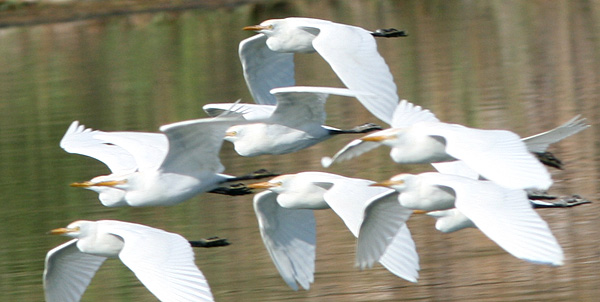
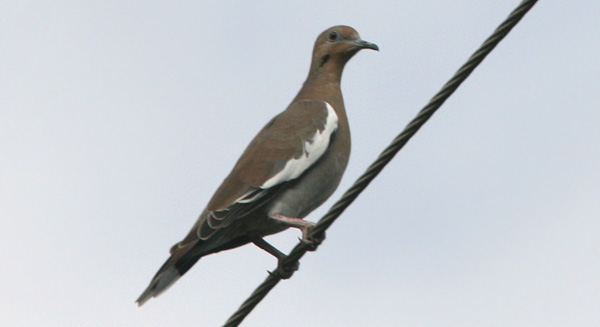
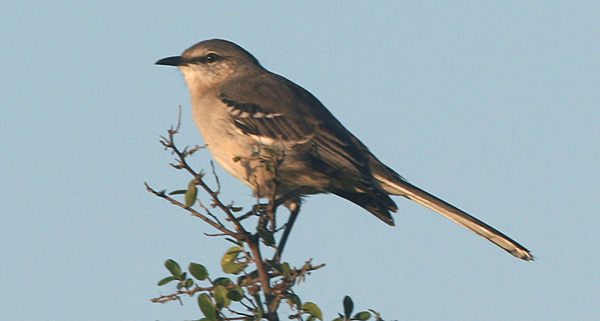
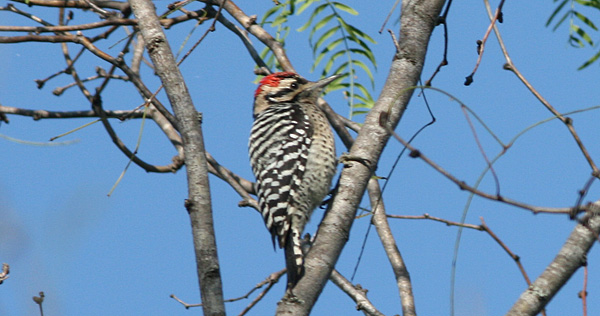
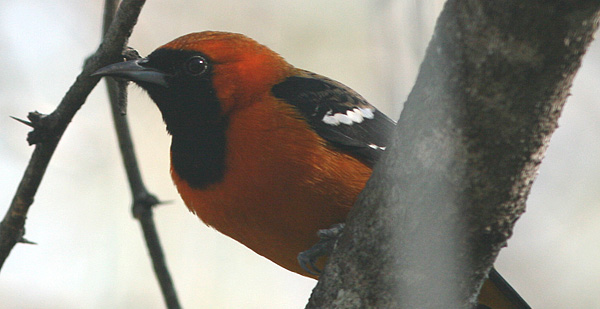
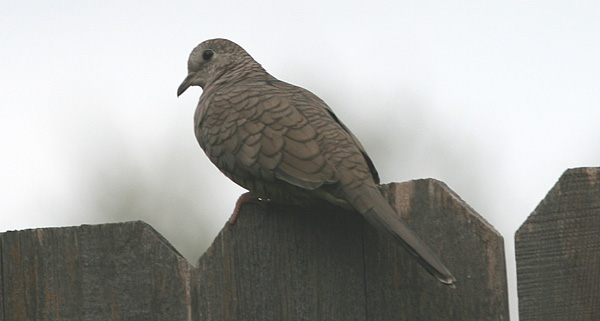
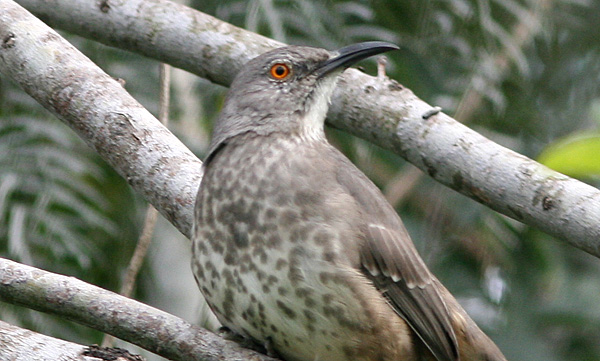
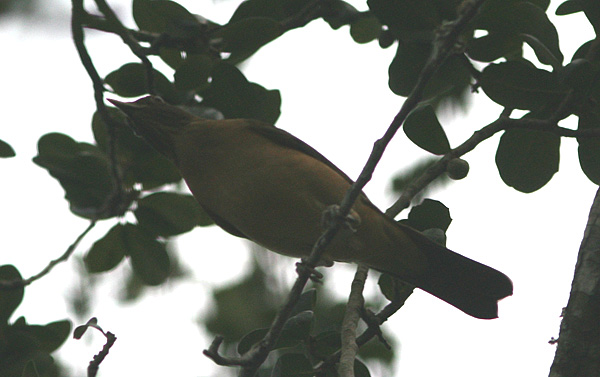










Wow – that’s what you call a good day’s birding!
Such beautiful birds. I lived in Texas as a child and was oblivious to the birds around me. Wasted years. Although I do remember seeing scissor-tail flycatchers! They kind of stand out, though.
Thanks for mentioning scissor-tailed flys, Liza Lee. They were so common throughout El Valle that I forgot to mention them. Awesome birds!
Mike –
Fantastically filled blog with lots of great photos. I could stay here for hours, to be sure. While birds have in the past eluded me (I stick to bugs because I can usually coerce them to hold still), I am positively fascinated. I can say that it started by identifying and watching a local anhinga when I lived in Miami. Quite the huntress!
Anyhow, great blog! Thanks for taking the time to provide such interesting and articulate posts.
I am so glad to have been there to see you see the magic valley. The dinner you prepared after a long day of birding–fantastic!
Thanks, Mike, for reviving fond memories of perhaps my favorite birding hotspot. AND, home (Solineno) to my best-ever sighting, a black-collared hawk! Unfortunately, without a camera and documentation, this first North American sighting will not be my ticket to fame.
It was fun to read about our adventurous day in the Rio Grande Valley! Thanks for sharing it!
Enjoyed your Rio Grande Valley post. I live in Tucson, AZ, and we have most of the birds you have pictured, but I haven’t seen a cattle egret yet. I love your photo of the curve-billed thrasher, one of my favorite birds to watch.